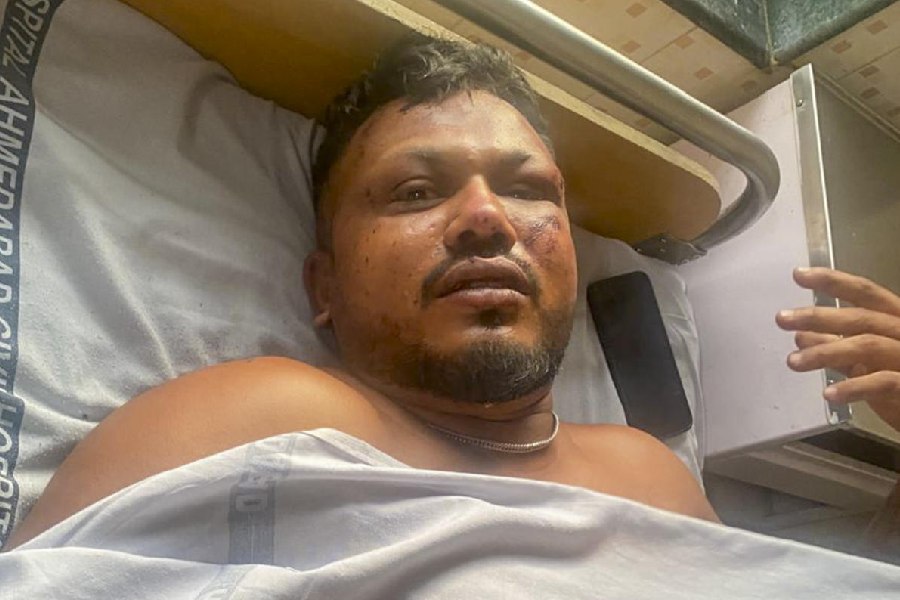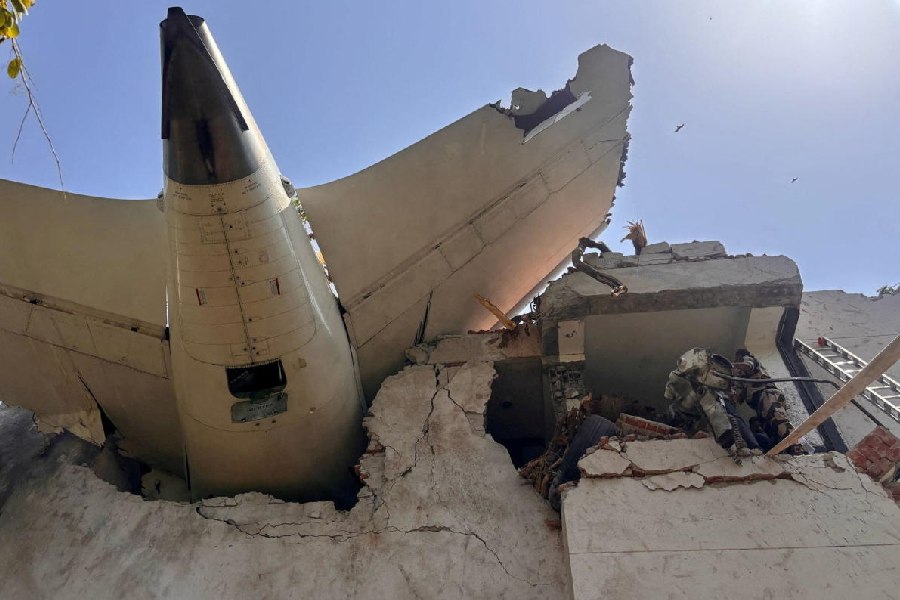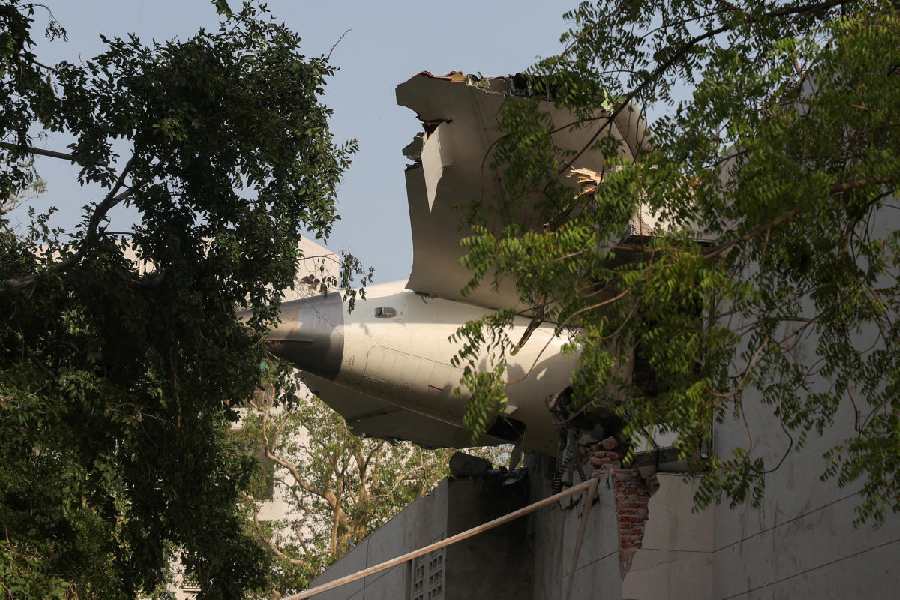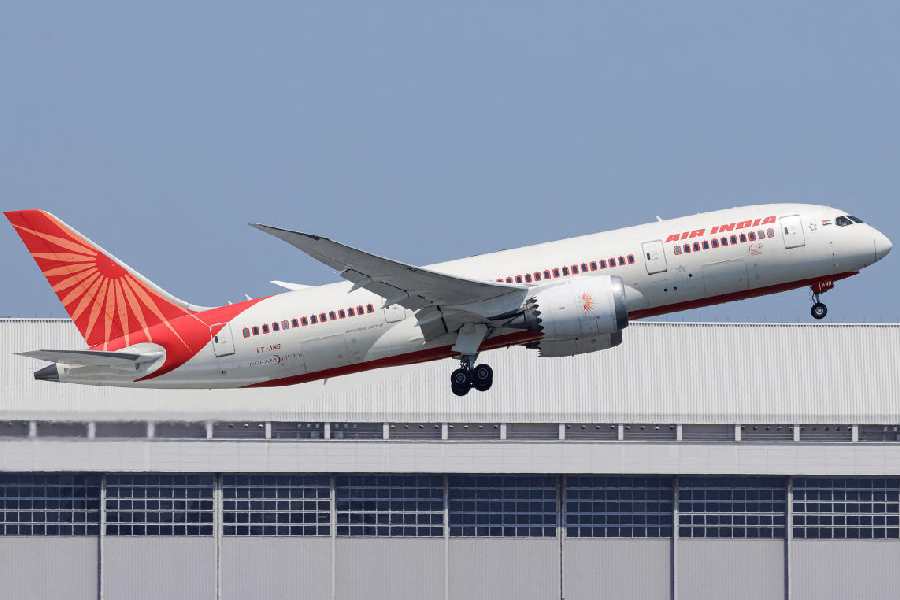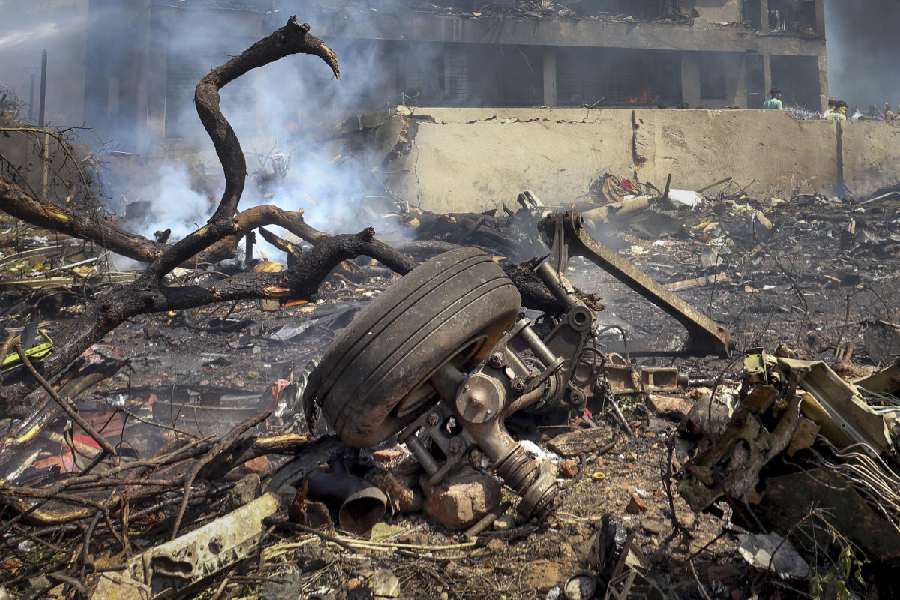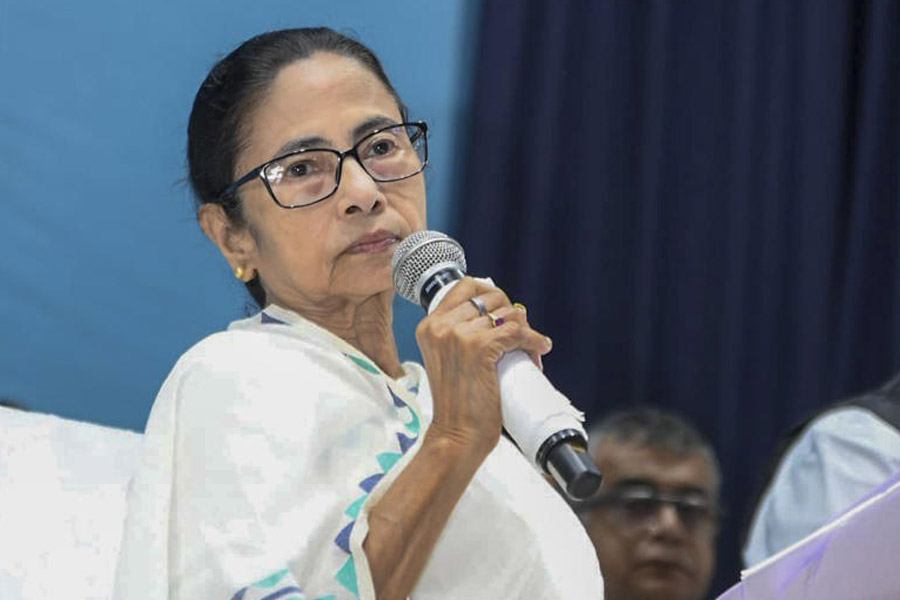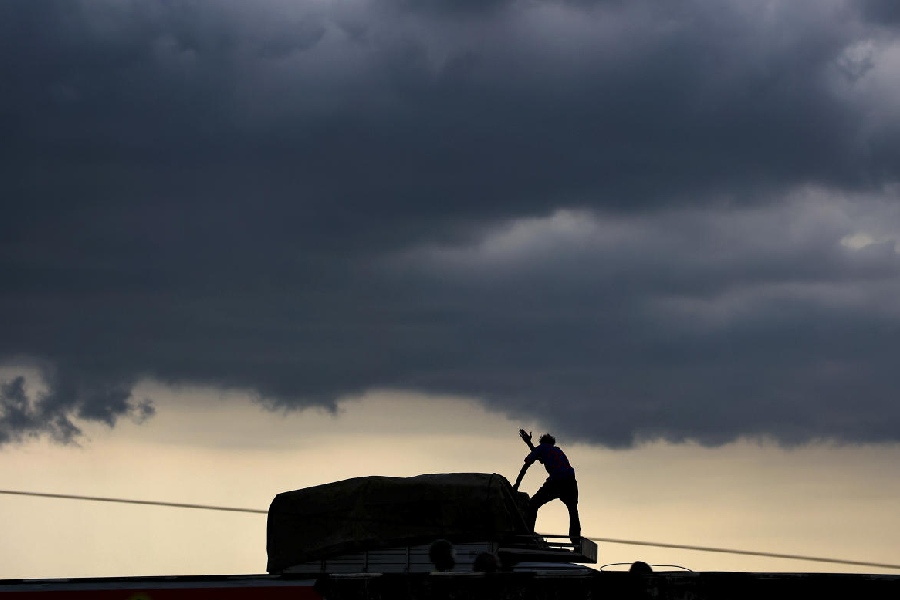 |
| One of the works on display at an exhibition of Indian and Bangladeshi artistes presented by Bangladesh Deputy High Commission, Calcutta, and Bengal Foundation-Dhaka, at ICCR. Picture by Rashbehari Das |
Conservation is the new buzzword in academic circles. The School of Humanities and the Centre of Advanced Study, department of English, Jadavpur University, has tied up with the University of Liverpool for two years to study four Indian cities — Calcutta, Pondicherry, Goa and Chandigarh — and help in their conservation.
Students and academicians from both universities are taking part in several interesting projects and workshops under Envisioning the Indian City: Spaces of Encounter (ETIC), a programme funded by the UK-India Education and Research Initiative (UGC-UKIERI).
Supriya Chaudhuri, the joint project coordinator, said ETIC (eticproject.wordpress.com) emphasises the centrality of the city in modern cultural studies. “There have been recent studies of Delhi and Mumbai, such as Rana Dasgupta’s Capital and Suketu Mehta’s Maximum City. Calcutta too has been studied, but in isolation from other colonial cities. What the project seeks to do is to look at the city as a space of encounter, a kind of contact zone of physical and material cultures across space and time. By examining the built environments and cultural flow of these four cities, we hope to discover new aspects of our historical and physical identities. We want to use the study of place and of urban cross-cultural exchanges to examine the nature of Indian modernity.”
Several workshops covering various aspects of city life, including its conservation, are being held in Calcutta and Liverpool. The workshops are attended by academicians as well as students from the two universities.
Three of the cities on the project radar had been European colonies — Portuguese in Goa, French in Pondicherry and British in Calcutta.
“Chandigarh was born after Independence. Pondicherry hosts an ‘ideal’ township, Auroville, while Calcutta too includes the planned township of Salt Lake. Historically, migration, conquest and commerce made Indian cities palimpsests of experiences and memories, and crucibles of encounters with the world. Each city is a sedimented space, in terms of built environment and urban geographies, of human settlements, migration and population flows, and the cultures that shape the urban landscape. Three of the world’s greatest urban planners and architects, Le Corbusier, Tomas Bata, and Patrick Geddes, had close links to India,” Chaudhuri explained.
Chaudhuri added the project is attracting enthusiastic researchers everyday, keen to work on street food, schools, traffic, the underground and even on the sounds of the city. “A student has been working on the various bazaars of Calcutta. Many are volunteering for individual projects.”
How green is my city?
Green activists discussed the importance of recycling, its challenges and the role of children in building a cleaner city at a talk at The Harrington Street Arts Centre, in association with Create to Inspire and Earth Day Network, on the last day of Vivan Sundaram’s exhibition Landfill.
The talk began with how waste management is the need of the hour and the nonchalant attitude of people towards disposing of their household waste. “As long as the heap of garbage is not in my bedroom I don’t care,” is how Paromita Saha, dancer and part of Create to Inspire, summed up people’s mindset. Her mission was to inspire citizens to build a cleaner city through art and storytelling.
Kasturi Roychoudhury of Garbage Free India explained how the organisation was started and how it used kids to change the attitude in neighbourhoods. “We know everything but we don’t do anything. We got bored of discussing problems in our drawing room and decided to get into action,” she said.
Amrita Chatterjee of NGO Safe spoke about her recycling unit and her work with pockets near Dhapa on the EM Bypass. She liaisoned with corporate houses to segregate their waste and dispose it of the right way. Her unit has also checked unhealthy waste scavenging and provided employment to youths in their recycling unit.
Iftekar Ahsan of Calcutta Walks turned his love for the city into something meaningful. “I started taking people around the city. I used to miss Calcutta, though it was filthy. Calcutta Walks was my way of answering questions. I wanted to turn our liability into assets. We show people around the city and plough back the money for social causes,” he said.
“We don’t realise how harmful our e-waste is. But then should we stop recycling them?” said Sasanka Dev of Disha, adding that the solution lay in the right way of recycling and sorting out the harmful elements.
Photo fest
A festival of photography marked the second congress of the International Photography Museum and Gallery Alliance (IPMGA) last month. IPMGA, headquartered in China, boasts members across 19 countries, including Belgium, China, France, Greece, The Netherlands, Portugal and India. Its first congress was held in Lishui, China in 2011. It was there that Calcutta was selected as the venue for the second congress and ace photographer Mala Mukherjee appointed its chairperson.
Around 25 delegates from the member countries of the IPMGA participated in the festival at ICCR that also showcased photographers from many Calcutta clubs and associations.
A series of seminars and workshops were conducted by eminent curators like Fu Weixin from China, Malavika Karlekar and Avinash Pasricha from India, Aristeidis Kontogeorgis and Grigorios Vlassas from Greece, Laurens Janus from The Netherlands, Pierre Delaunay from France and Bruno Vetters from Belgium.
Delauney held a workshop on portrait photography, where he underlined the need to build a good rapport with the subject.
 |
| Pierre Delauney at ICCR.Picture by Arnab Mondal |
MAD camp
Children from Calcutta Muslim Orphanage for boys and Girls, Dakshin Kalikata Sevasram and All Children Together Trust enjoyed three days of fun and activities at the Dream Camp hosted by MAD (Make A Difference) at Ibiza resort.
Students from NUJS, St. Xavier’s, Asutosh, Presidency and other colleges and university volunteered and mentored the kids as they took part in sessions on self-defence, first aid and hygiene, sex education, clay-modelling and non-gas cooking.
Contributed by Chandreyee Ghose, Trina Chaudhuri and Samabrita Sen


